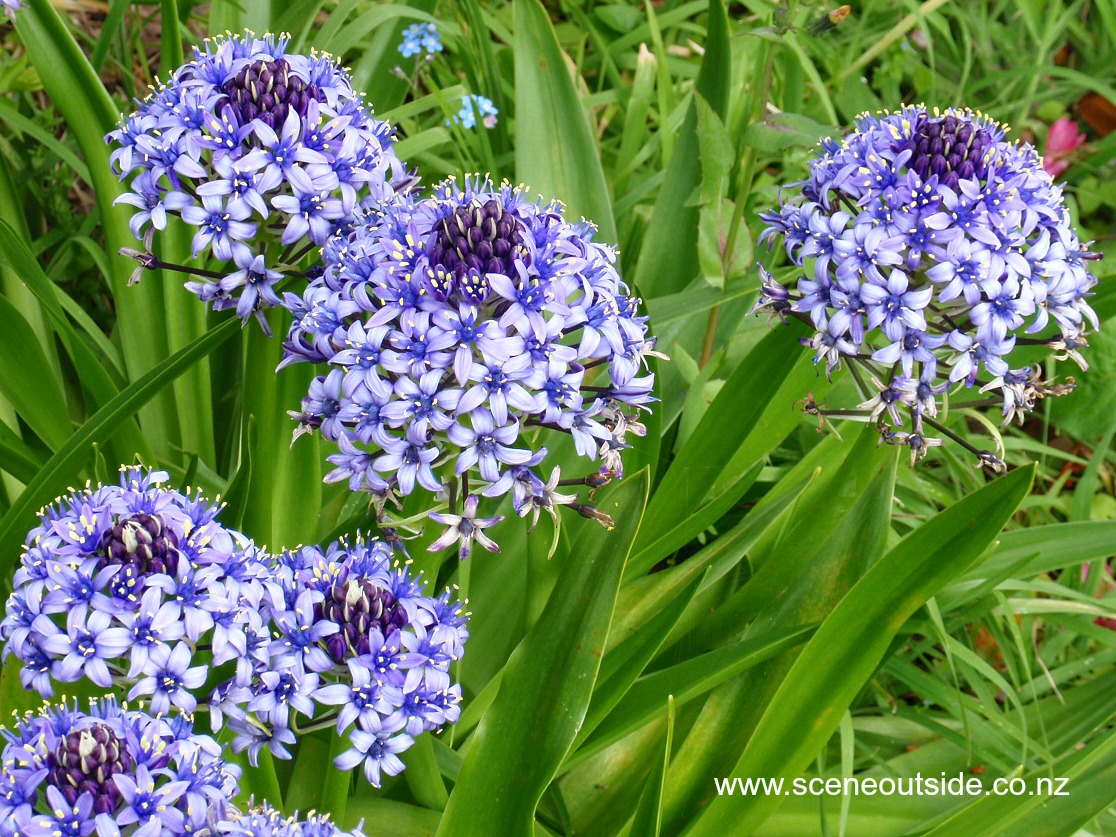

Scilla peruviana
giant scilla, Peruvian lily, Cubian lily, Carribean lily, Portuguese squill, hyacinth of Peru, star of Peru
Bulbous plant with basal, linear leaves (20-60cm long and 2-4cm wide) flowering during spring with starry blue, 1.5 cm wide flowers arranged in dense racemes. Foliage dies down after flowering and a brief dormant period follows in summer. Is naturalised and regarded as a weed in some parts of Australia.
Although 'peruviana' means 'from Peru', Scilla peruviana originates from South-West Europe to North-West Africa. Bulbs collected in 17th century Spain were shipped to England on a ship named 'Peru'. Carolus Clusius named the plant Hyacynthus stellatus peruanus, thinking that it came from Peru. Linnaeus continued the confusion by renaming the plant Scilla peruviana.
Scilla peruviana is still the most widely used name, but this species has been renamed Oncostema peruviana.
Prefers a sunny or lightly shaded spot in well-draining soil. Drought tolerant once established. Best planted during the dormant period in summer with the neck of the bulb just above soil level. Can be lifted, divided, and replanted, but may not produce flowers until after a year or two. Suitable for coastal gardens. Tolerates moderate frosts (zones 8-10).
Stunning spring colour. In areas where heavy frosts occur, Scilla peruviana can be grown in containers and placed outside once the spring frosts are over.
Type of plant
Herbaceous - PerennialSize
.3 m tallLandscape Use
flower display, rockeries, coastal gardens, container plantSpecifications
- Temperature: Half hardy
- Light: Medium High
- Moisture: Low Medium
- Soil: Light Medium
- Wind tolerance: Low
- Coastal tolerance: High


